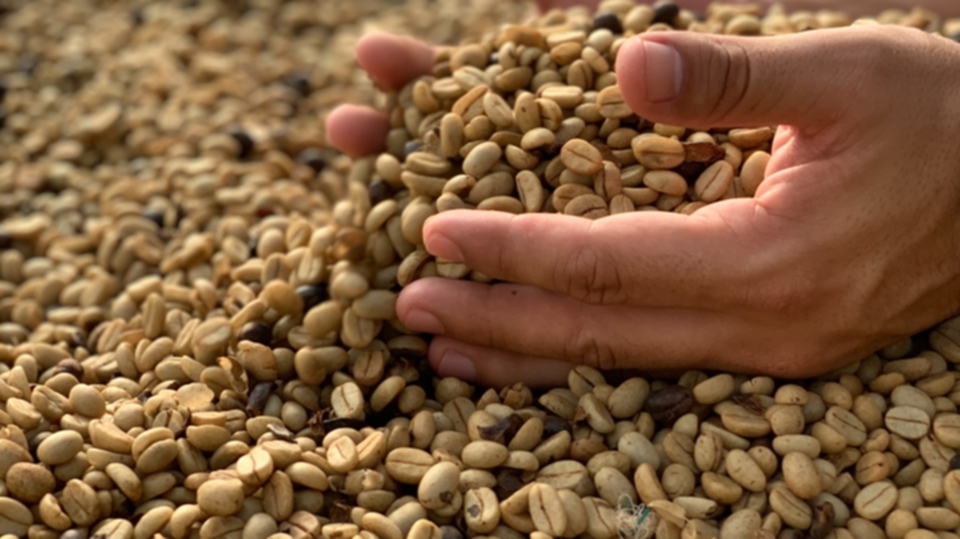How Does The Processing Method Affect The Coffee Flavor?

Why do sun-dried beans taste different from washed beans? What makes the sweetness of honey processed coffee more obvious? The raw bean processing method has a huge impact on the flavor, aroma, and mellowness of coffee, and it is also an important distinction for many people to choose coffee beans.
This article allows us to explore the chemical changes that occur during processing and how these changes affect the flavor in the cup.
Coffee Flavor And Aroma Brought By The Origin
The flavor and aroma of coffee will develop during roasting, and aroma compounds will be transformed in the green coffee beans by many chemical reactions.
The degradation of monosaccharides and polysaccharides during the roasting process will produce sweetness and caramelized aroma. On the contrary, the degradation of hydroxycinnamic acid (a phenolic compound) will produce the fragrance of the perfume. Hydroxy amino acids such as threonine and serine are converted into volatile compounds called pyrazine and pyrrole, which produce the unique smell of coffee roasting.
But what does this have to do with the processing method? The processing method will affect the chemical substances released from the green beans when the coffee beans enter the roasting machine and, therefore, affect the coffee aroma produced by roasting.
How Does The Treatment Affect The Chemical Composition Of Coffee?
Coffee berries usually have two seeds. The inner peel and pectin layer covers the outer surface of the seeds, and the outer layer has pulp and peel. The pulp of coffee fruit itself contains a lot of sugar.
The processing method is simply the method of removing the seeds from the fruit. There are different traditional and innovative methods worldwide, but coffee is usually processed through the sun or water washing.
When using the sun treatment, the coffee will be exposed to the sun directly with the meat. Before the drying process, the water washing process removes the pulp, peel, and other substances while the honey process is somewhere in between. The pulp and peel of the coffee are removed before drying, but some pectin is retained for processing.
The treatment impacts the flavor and aroma because the sugar in the pulp left on the sun-dried or honey-treated coffee changes, which significantly changes the chemical composition of the green beans. These changes will be reflected in the final sweetness and mellowness of the coffee. Let us take a closer look at what will happen.
Germination
Coffee fruits are harvested when they are ripe, which means that the seeds in the fruits are about to begin to germinate. Sprouting will activate some polysaccharide enzymes. That is, natural sugars will start to decompose.
Researchers found that the enzyme activity of washed coffee is more than that of sun-treated coffee. This means that some of the aromatic compounds and free sugars that form during the roasting process will be decomposed during the washing process, making the washed coffee taste more refreshing than the sun-dried coffee because it contains less aroma compounds higher acidity.
Ferment
Due to the fermentation of sugar in the pulp, sun-dried coffee is sweeter than washed coffee. Washed sun-dried coffee has undergone a fermentation process, but since the pulp and pectin have been removed, the enzyme content used in washed coffee is much less.
During the fermentation process, microorganisms change protein, carbohydrates, and chlorogenic acid. More aromatic compounds are produced in the sun-dried coffee, and the result is not only the sweetness in the coffee but also the fruity, floral, and caramel flavors that can be drunk in the coffee. In contrast, washed coffee is cleaner and allows the drinker to recognize the taste of a particular coffee.
The processing procedure of honey treatment includes removing part of the pulp so that the pectin around the coffee beans can be better fermented, which makes the sweetness of honey treated coffee more obvious than sun-dried coffee, with a more creamy aroma and nutty flavor.
Fermentation can greatly impact the flavor, aroma, and mellowness of coffee, but the fermentation process needs to be carefully controlled. Excessive fermentation will produce too much acetic acid and phenolic compounds, making the final coffee bitter or sour. And because the microorganisms present in coffee are dense and diverse, it may lead to inconsistent and unpredictable results in fermentation.
Beans that have experienced a longer germination period and a shorter fermentation time may have poorer flavor performance because both stages help to enhance the flavor of the coffee.
The Influence Of Processing Method On Roasting Technique
Above, we have probably understood the effect of the treatment method on the chemical composition of the green beans. The treatment method will also affect the compounds that will be converted into aroma during roasting. It is necessary to understand the influence of the treatment method during roasting.
Sun-treated coffee retains more sugar and reacts more sensitively to heat during roasting. Simple sugar molecules will quickly degrade during roasting and produce an unpleasant burnt taste. This means that the roaster needs to be more careful about the roasting curve, especially in the early stages of roasting.
Washed coffee is the most common and most popular processing method. This processing method will bring out a clean flavor so that the taster can drink the flavor brought by more distinct regions and varieties. But many people like the sweetness and fruity flavor of the sun and honey treatment. No matter what coffee you choose, you now have a little idea of ??how the processing method affects the flavor.
